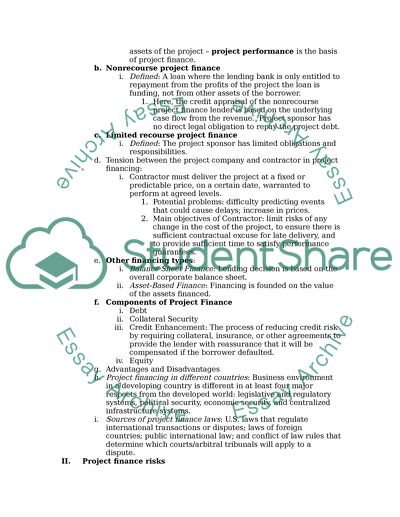Cite this document
(Nuts and Bolts of an International Project Financing Case Study, n.d.)
Nuts and Bolts of an International Project Financing Case Study. Retrieved from https://studentshare.org/finance-accounting/1735434-lecture-outline-project-finance
Nuts and Bolts of an International Project Financing Case Study. Retrieved from https://studentshare.org/finance-accounting/1735434-lecture-outline-project-finance
(Nuts and Bolts of an International Project Financing Case Study)
Nuts and Bolts of an International Project Financing Case Study. https://studentshare.org/finance-accounting/1735434-lecture-outline-project-finance.
Nuts and Bolts of an International Project Financing Case Study. https://studentshare.org/finance-accounting/1735434-lecture-outline-project-finance.
“Nuts and Bolts of an International Project Financing Case Study”, n.d. https://studentshare.org/finance-accounting/1735434-lecture-outline-project-finance.


